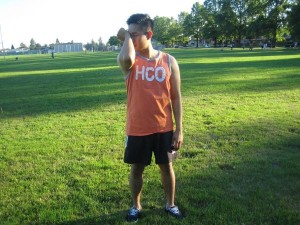
Lazy eye, also called amblyopia, is a development disorder in an eye that results to reduced visual acuity. It starts as soon as infancy to childhood which is often associated with crossed-eyes. Usually, it only affects an eye but reduced visual acuity may also occur on both eyes as well. Nowadays, lazy eye tops the causes of reduced vision among children although there are no apparent abnormalities or damages seen on their eyes. If not treated immediately, this reduced visual acuity may even lead to legal blindness of the affected eye.
Lazy eye develops when visual stimulation is not properly transmitted through the optic nerves to the brain resulting to a poor or blurry vision. Because of this poor vision, the brain favors the other eye or the “good” eye causing the affected eye to wander. Eventually, the brain may disregard the signals being sent by the affected eye or the lazy eye.
Treating lazy eyes is better if patient are 6 years or under. However, there have been cases seen on adult or older patients having improved vision upon treatment. Treatment involves usage of corrective eye wears or patches and surgery.
Signs and Symptoms
Signs and symptoms of lazy eye include:
- Noticeable favoring of one eye
- Poor depth perception
- The person may bump into objects on one side
- Having difficulties in seeing three-dimensional images hidden in stereoscopic displays
- Reduced sensitivity to motion and contrast
Lazy eye usually affects only an eye although, rarely, there are cases of having it on both eyes.
When to seek medical attention
As part of healthy childhood, vision checkups are done during childhood since complete eye exams are recommended at the ages of 3 to 5. If you notice your child’s eye wandering, it is better to consult your pediatrician so that he can evaluate your child’s condition and refer him, if possible, to eye specialists or ophthalmologists.
Causes
Things that blur a child’s eye or make them cross are already considered causes of lazy eye. Other common causes include:
- Stabismus or the misaligning of the eyes due to an imbalance in the muscles. The brain ignores input from the misaligned eye to avoid double vision leading to amblyopia in that eye.
- Anisometropia, the unequal refractive error between the eyes or the presence of high degrees of nearsightedness, farsightedness and astigmatism on one or both of the eyes. The eye that produces a clearer image becomes the dominant eye. The vision of the other eye then becomes blurred resulting to abnormal development of that eye.
- Something that obstructs entering the baby’s eye, such as in the case of congenital cataracts or corneal haziness. This obstruction prevents visual input from reaching the eyes resulting to abnormal development.
Treatment
Normally, lazy eyes should be treated immediately during the patient’s childhood or as soon as his affected eye wanders. However, treatments may vary depending on the degree or cause of the patient’s lazy eyes which includes:
- Corrective eye wear. If the child is suffering from anisometropic amblyopia, then all that is needed is corrective eye wear to fix the refractive errors on the eye or both.
- Eye patch. Patching of the “good” or dominant eye is needed to force the brain to receive visual input only on the affected eye to enable visual development to occur on that eye.
- Surgery. If your child’s eye starts to wander, surgery is needed to fix the eye muscles. Other problems, such as cataracts, also need surgical procedures.
- Eye drops. There are eye drops which contain atropine which temporarily blurs vision. This can be used as an alternative to eye patch.
Related topic:
